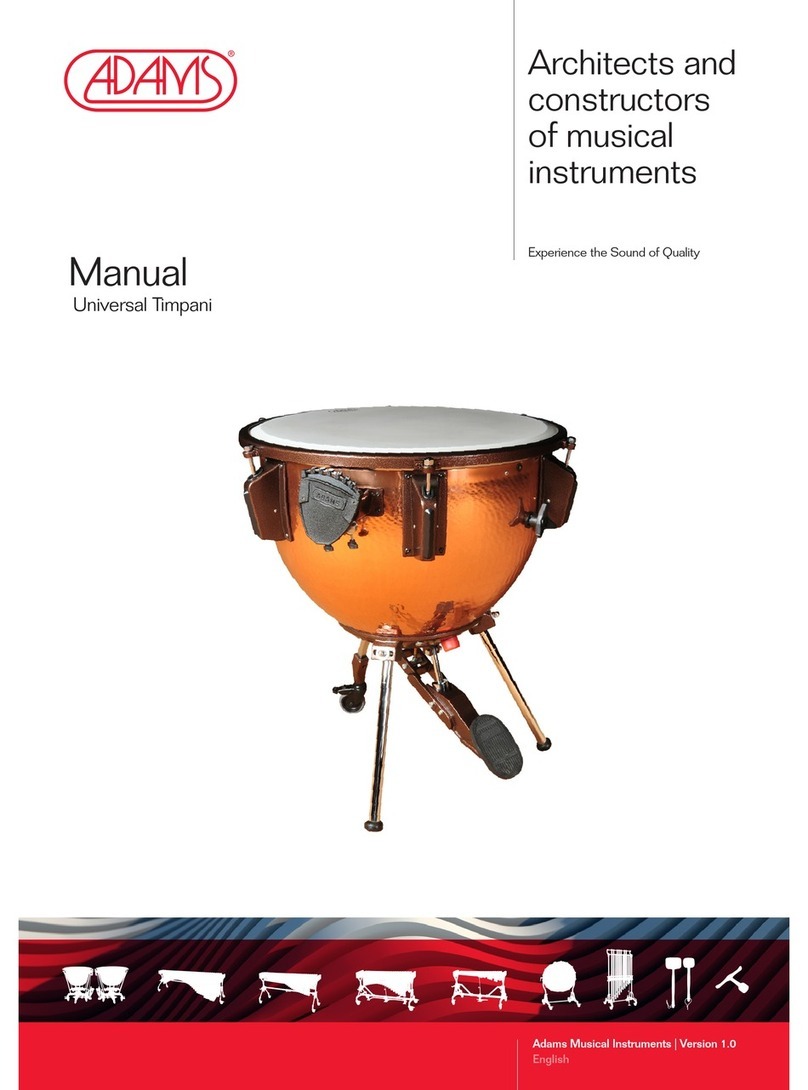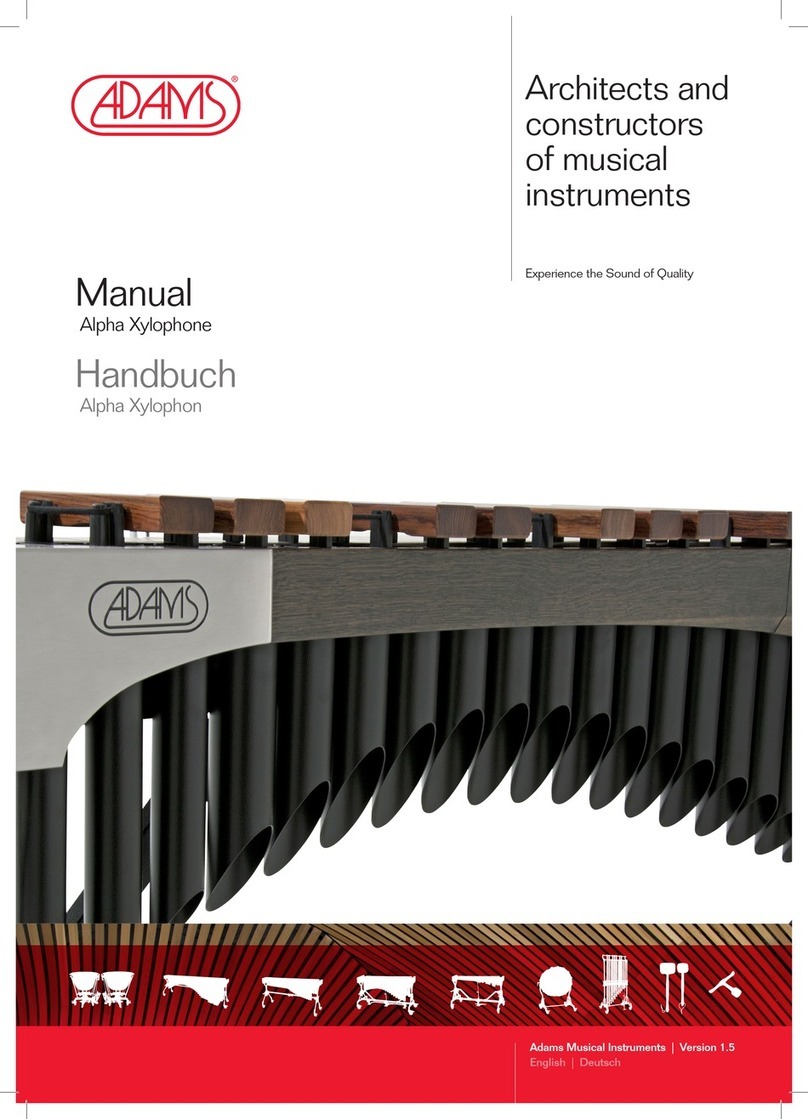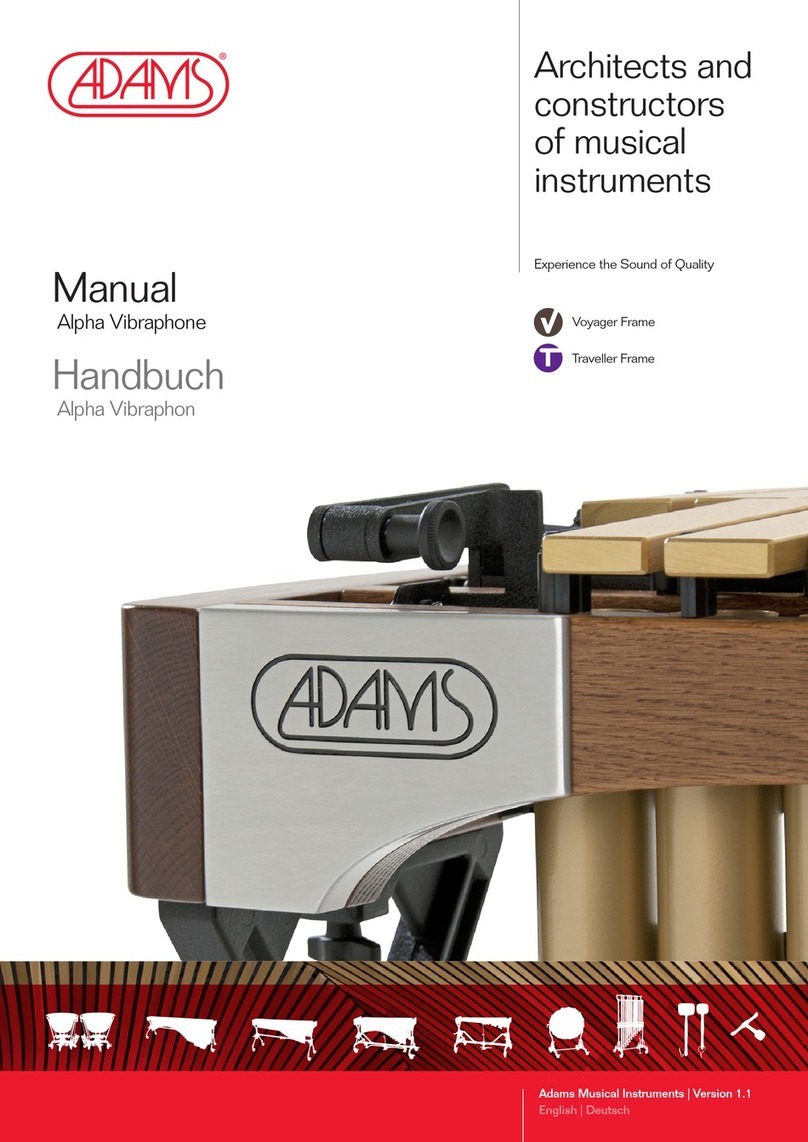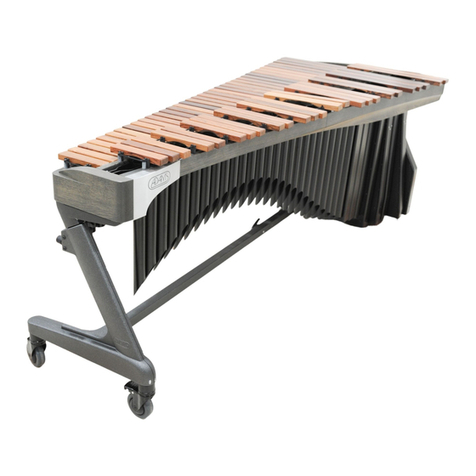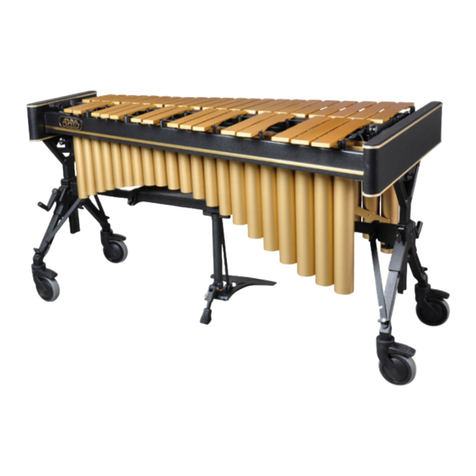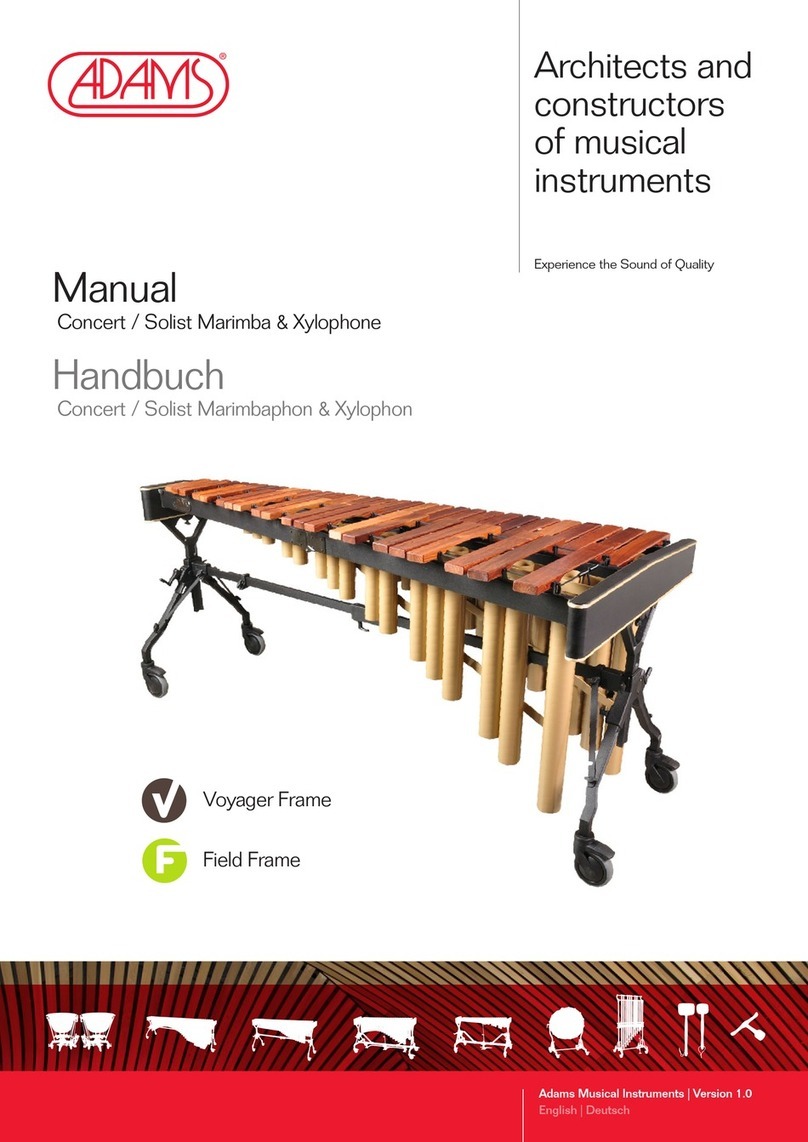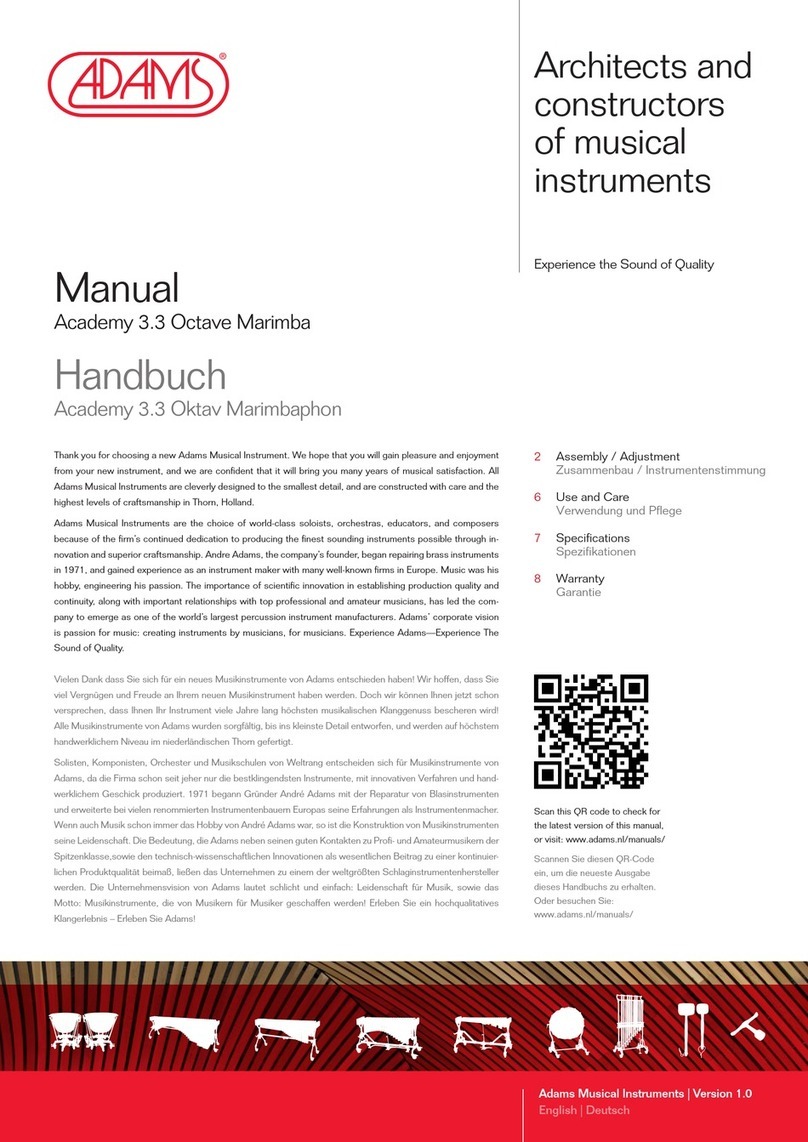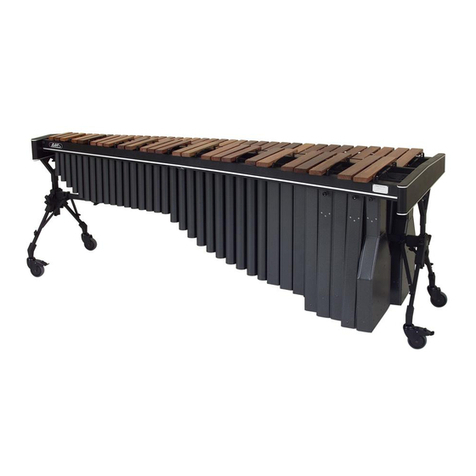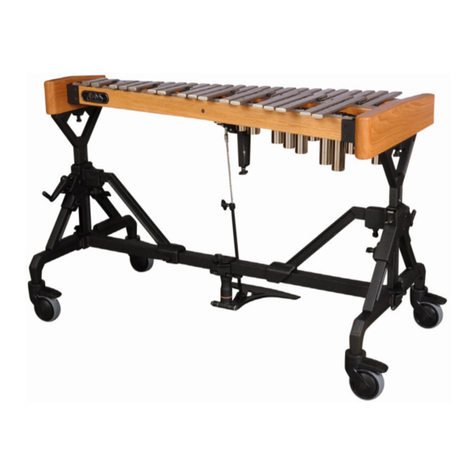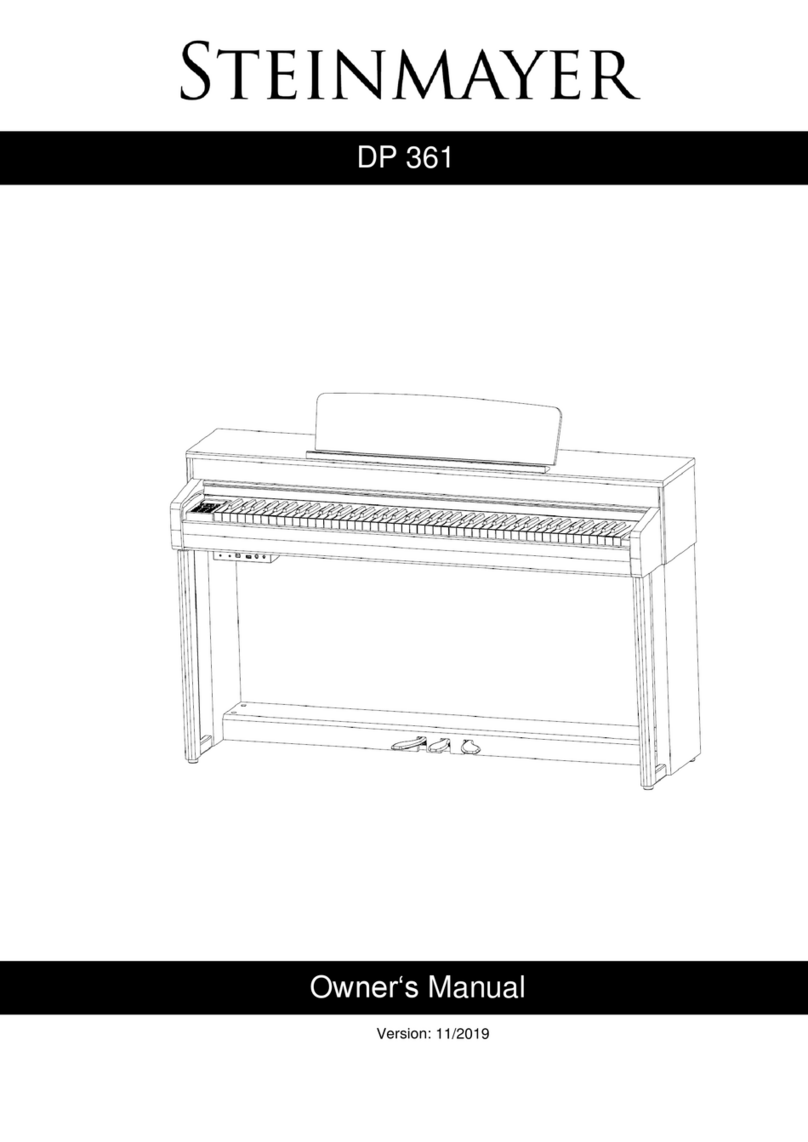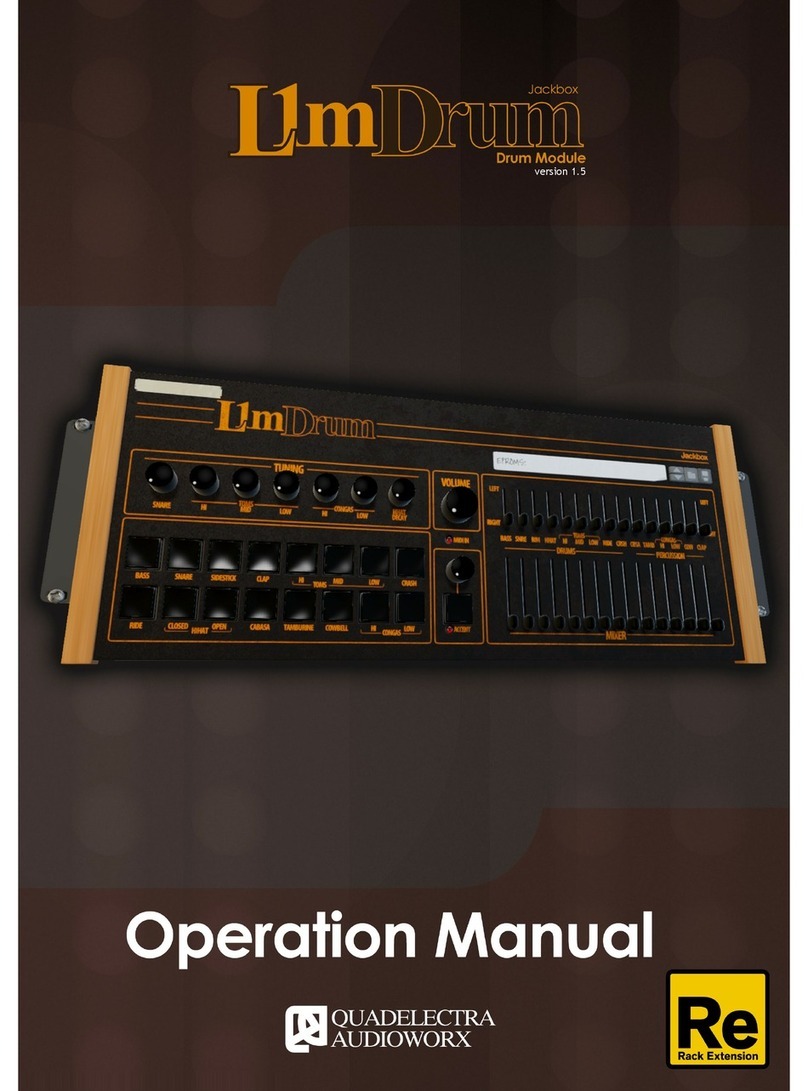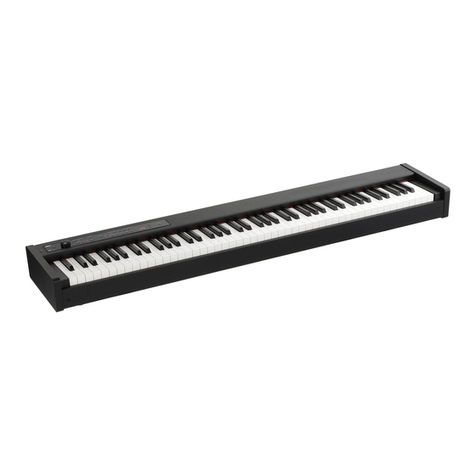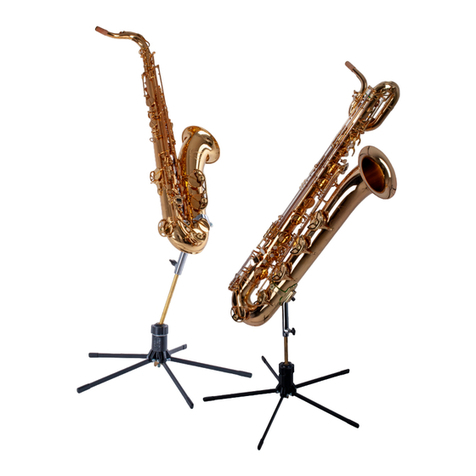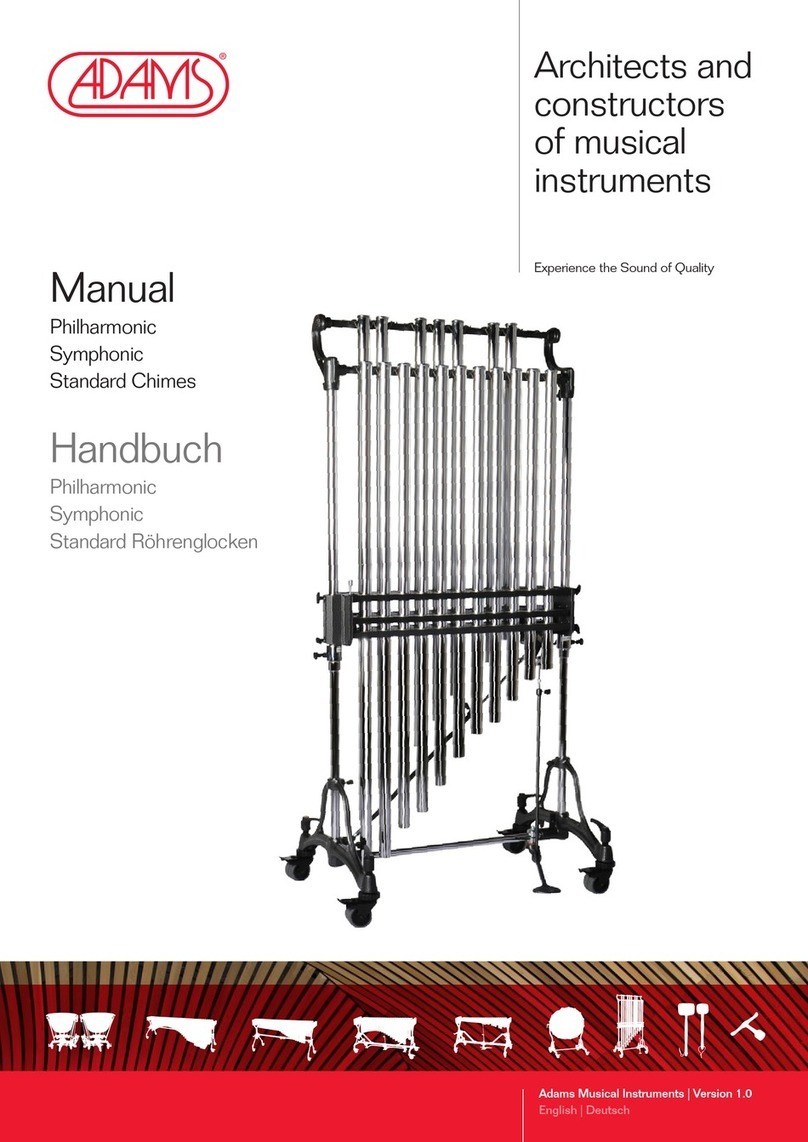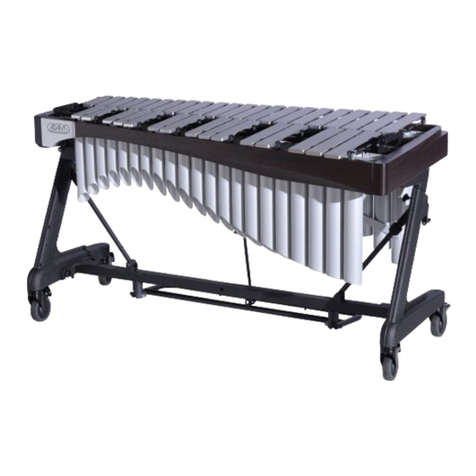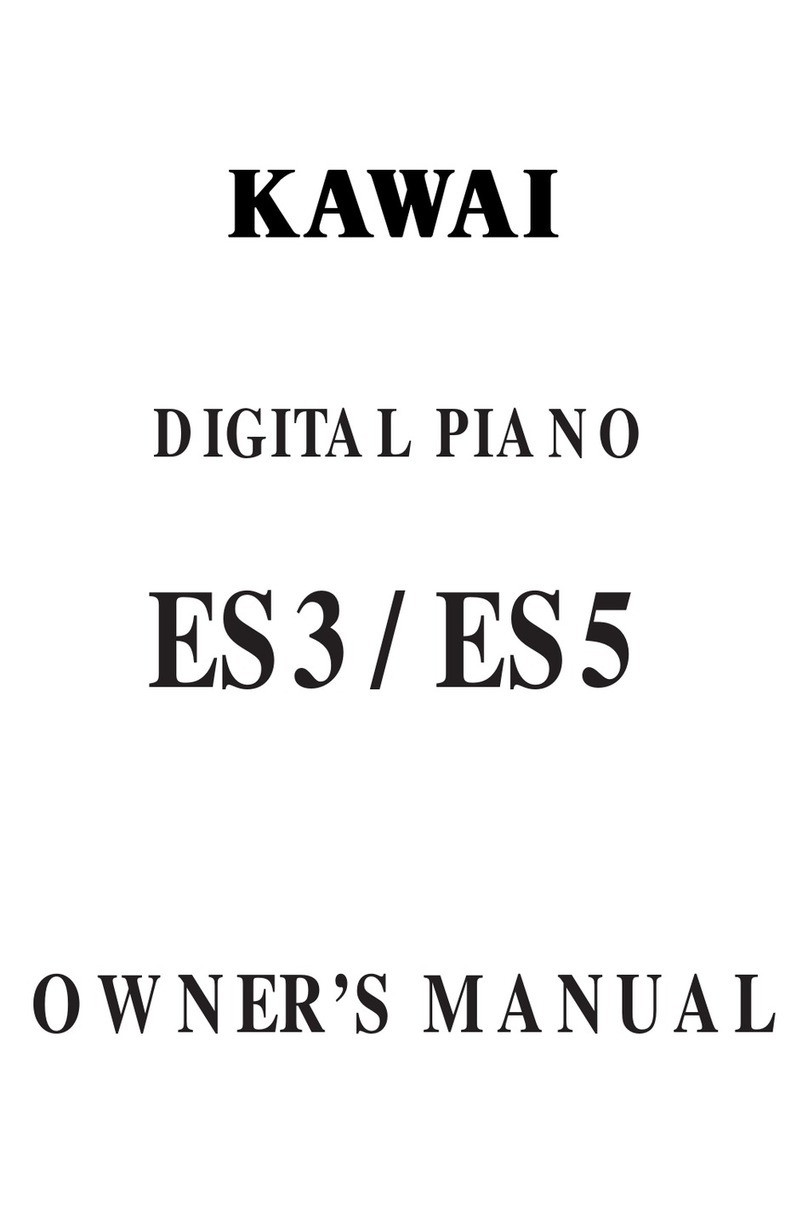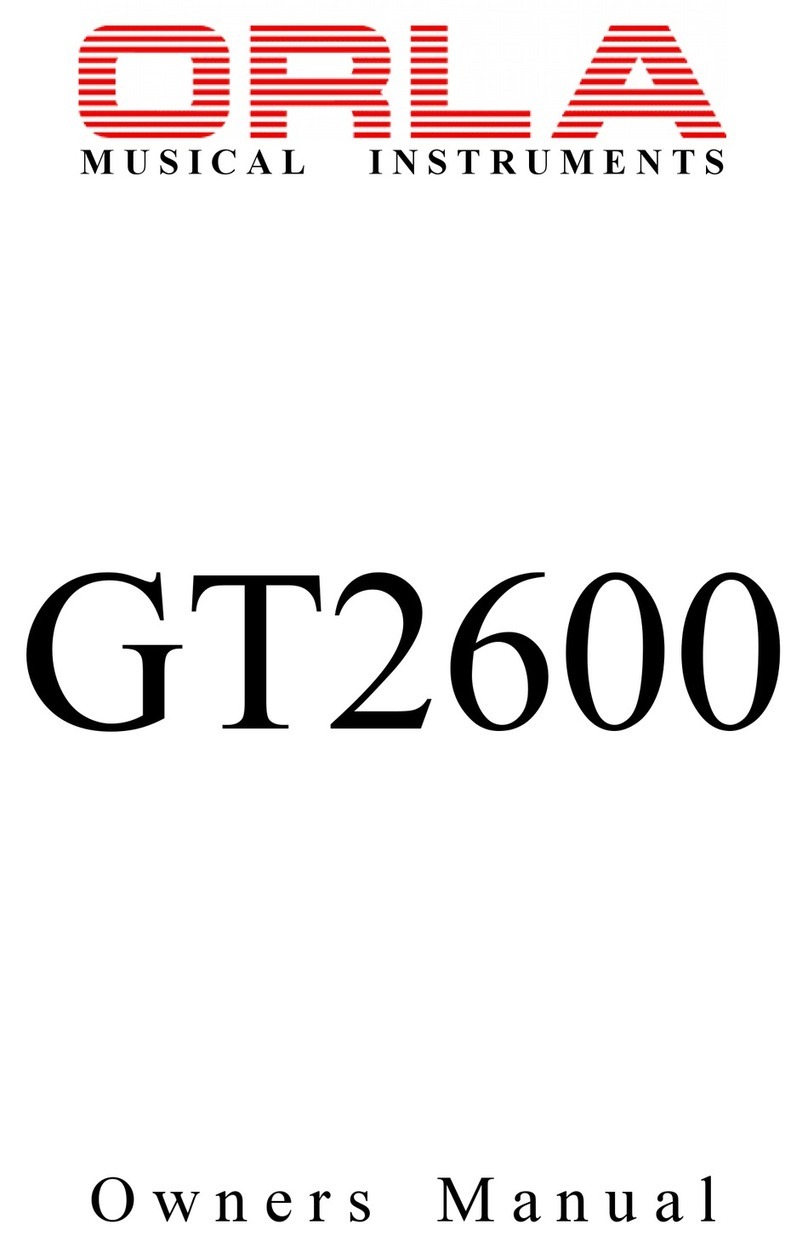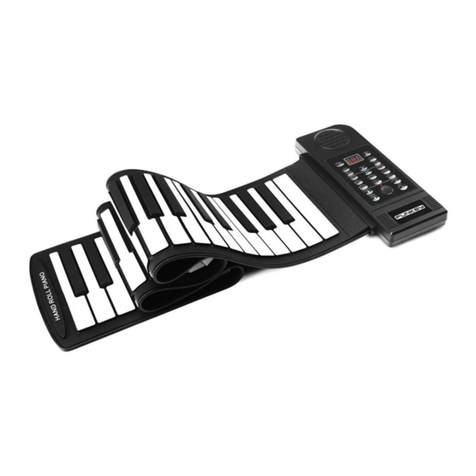Preface Contents
Thank you for choosing Adams Revolution Timpani. We hope that you will gain pleasure and enjoyment from your
new instrument, and we are confident that it will bring you many years of musical satisfaction. All Adams Musical
Instruments are cleverly designed to the smallest detail, and are constructed with care and the highest levels of
craftsmanship in Thorn, Holland.
Adams Revolution Timpani combine truly professional sound quality with innovative features for effortless portability.
The groundbreaking balanced action pedal system allows the Revolution base to detach from the kettle without any
tools, and retains the tension responsible for the fundamental tone in the base. When the kettle is separated from
the base, the legs fold up for easy portability with the integrated handle. The fine tuner allows the drum not only
precision tuning, but the gives the player the ability to select from over one octave of range. There has never before
been a more practical, portable, and professional quality instrument.
In this manual, each feature is given brief description of how the feature works and a step-by-step adjustment guide.
Understanding the adjustment is as important as making the adjustment.
At the factory, a new Remo Renaissance head is installed on all Adams timpani. During shipping and delivery, this
head will stretch and settle. Before using your timpani for the first time, read and work through pages 4-9 to correct
any mechanical difficulties caused by the change in the head tension. If necessary, general troubleshooting topics
are available on page 21.
Adams Musical Instruments are the choice of world-class soloists, orchestras, educators, and composers because
of the firm’s continued dedication to producing the finest sounding instruments possible through innovation and
superior craftsmanship. Andre Adams, the company’s founder, began repairing brass instruments in 1971, and
gained experience as an instrument maker with many well-known firms in Europe. Music was his hobby, engineering
his passion. The importance of scientific innovation in establishing production quality and continuity, along with im-
portant relationships with top professional and amateur musicians, has led the company to emerge as one of the
world’s largest percussion instrument manufacturers. Adams’ corporate vision is passion for music: creating instru-
ments by musicians, for musicians. Experience Adams—Experience The Sound of Quality.
Nomenclature
Fundamental Tone
Pedal System
Tuning Gauge
Fine Tuner
Range Selector
Baroque Style Timpani
Detachable Kettle
Height Adjustment
Head Replacement
Clearing Heads
Troubleshooting
Use and Care
Specifications
Warranty
Accessories
3
4
6
8
10
12
13
14
16
18
20
21
22
24
25
26
Scan this QR code to check for the
latest version of this manual, or
visit: www.adams.nl/manuals/
www.adams-music.comwww.adams-music.com




















